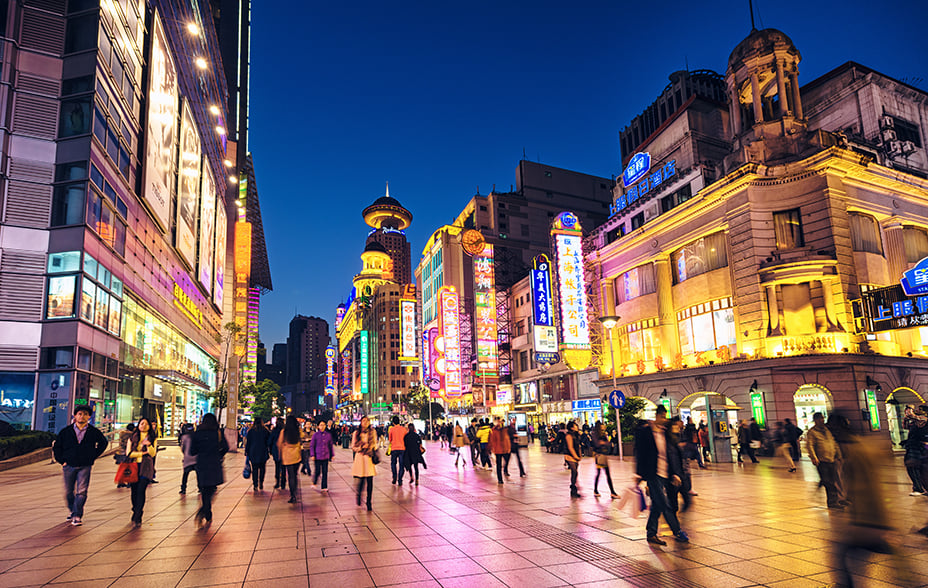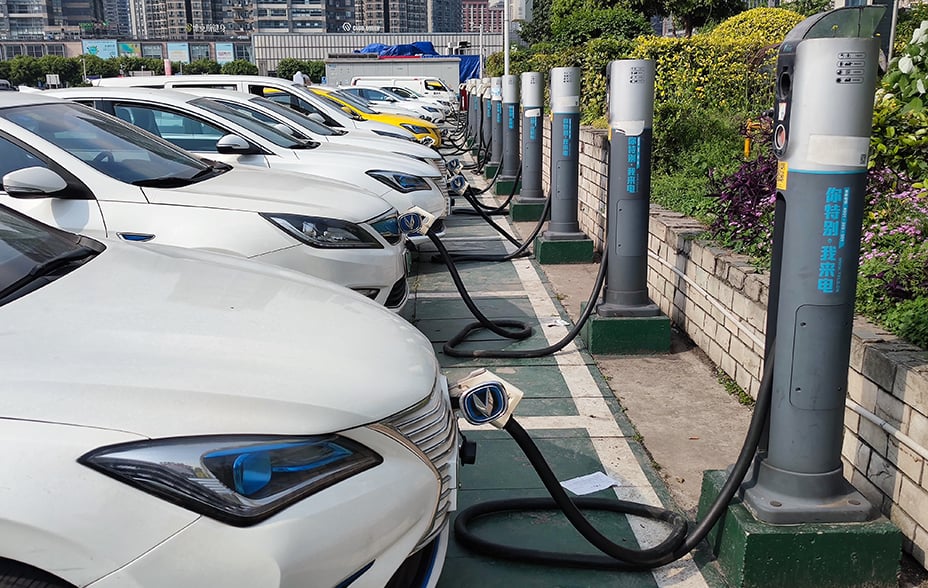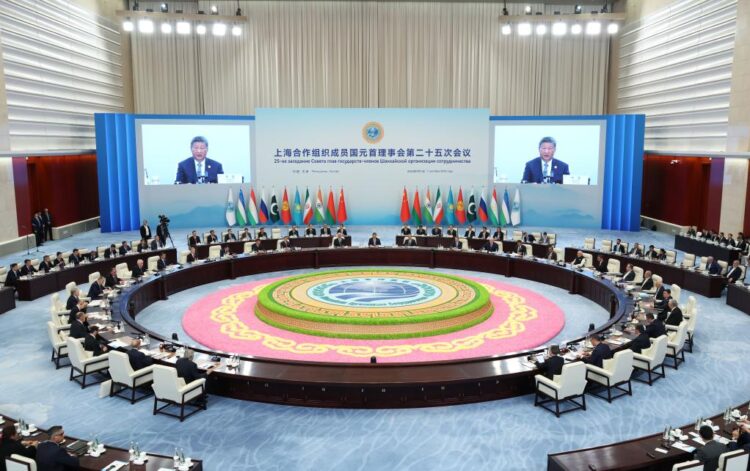All investment strategies have the potential for profit and loss, your or clients capital may be at risk.
Harsh lockdowns, regulatory clampdowns and real estate woes have heightened concerns about the direction of change in the world’s second largest economy.
Questions persist about the role of the Chinese state, the progress of its economic reforms and its perceived challenge to the geopolitical order. All have added to the fear factor.
But change and disruption bring opportunities as well as risks. The former can easily be overlooked by those making broad-brush statements in a short-term market.
There, the picture can be muddied by a host of factors more to do with politics, perspective and sentiment than economic fundamentals.
Look at it this way. China has proved itself far more innovative than many believed was possible. The size of its markets and the scale of its ambitions provide formidable advantages, and the combination of a dynamic entrepreneurial culture and bold top-down policies are helping to deliver a number of world-leading companies.
Add in low valuations, low correlations with global equities and inefficiencies that offer scope for alpha, and China’s fundamentals continue to excite. The question therefore is whether fear of China’s challenges should be balanced against ‘FOMO’: fear of missing out on the long-term opportunities it offers.
The story so far
With growth slowing, policy risks rising and geopolitical challenges likely to continue, the risk-adjusted return on investment in China has changed markedly in recent years.
But no other country presents us with such radical change on such a large scale. The world-leading companies forging that change give us a glimpse of what the future will look like.
The reasons why are worth recapping:
- Now the number two economy in the world, China has contributed more to global growth in the last decade than the entire G7 combined.
- China’s stock markets are the second largest in the world. There are over 6,000 listed companies with almost 3,000 new companies emerging on China’s A-share indices in the last decade.
- According to the Australian Strategic Policy Institute, China’s global technological lead now extends to 37 out of 44 critical sectors, spanning robotics, energy, the environment, advanced materials and key quantum technologies.
- China now has more 5G base stations than the rest of the world put together and more than 60 per cent of the world’s total 5G users.
- Despite its carbon intensity, China has more renewable energy capacity than the next seven countries put together, leads global electric vehicle (EV), solar and wind supply chains, and is pioneering efficient energy use though rapidly expanding ‘smart city’ digital infrastructure.
A list of China’s achievements could go on. And yet its rapid growth in global economic and political importance hasn’t been matched by a similar shift in importance to investors.
So what are they afraid of?

Slowing the pace
After the fastest and most widespread economic transformation in global history, an inevitable change of gear is underway. China has grown GDP by an average of more than 9 per cent a year since 1978. It shouldn’t be a surprise that this has had to slow down. Its investment-led growth model is being increasingly challenged by the economic, social and environmental imbalances that accompanied its rise.
The previous solution to economic problems was to increase investment spending. But excessive investment spending is now the problem. China’s leaders must find new drivers of growth while addressing the negative legacies of the old ones. They need to boost domestic consumption – arguably the regime’s biggest challenge yet.
For a smooth transition, serious structural and institutional reforms are needed. But these bring political challenges. The recent picture is blurred by the effects of the Covid pandemic, but China’s economy is slowing on the back of declining labour force growth, diminishing returns to investment, and slowing productivity increases.
In 2023, a lack of consumer confidence, disappointing private sector spending and domestic property woes combined with a weaker external trading environment to disappoint those focused on short-term GDP figures. Against that backdrop, and the echoing chatter of weak sentiment, determining what’s cyclical and what’s structural change isn’t easy.
Now the great export powerhouse is increasingly looking inwards, the dynamics of its domestic economy are critical to its next stage of development. This is an important shift, but a growing focus on national security via self-reliance will feed the narrative of a more adversarial relationship with its main global competitor. But it also provides a tailwind of government support for cutting-edge industries, such as semiconductors, artificial intelligence (AI) and green technology: sectors that are critical to global challenges in coming decades.
Don’t get distracted
Chinese equity market returns have little historical correlation with China’s GDP growth trends. A focus on the big picture can distract investors from the specifics that matter to companies and returns over time.
We believe generating capital returns requires us to invest in disruptive and secular trends that play out over years or decades, not by trading share prices against other fund managers over months or quarters.
Thankfully, there are plenty of Chinese companies involved in long-term structural growth themes that are largely independent of what happens to the macro environment.
Take AI for example, which one think tank expects to account for 26 per cent of Chinese GDP by 2030 (it was 0.4 per cent in 2022). Access to oceans of data and the ingenuity of its companies, put China in a strong position
to exploit AI’s business-boosting potential.
China is already the world’s top industrial robot manufacturer. In semiconductors it is producing 30 times more chips than it did 20 years ago. We also see companies making impressive strides in sectors such as smart manufacturing, the industrial internet and smart cities.
These kinds of industries serve to keep the country globally competitive and increasingly self-reliant. Their progress marches on, largely unaffected by China’s macroeconomic gear change. This is what continues to excite us.
What’s clear is that as aggregate growth slows to something more normal, investors will have to become more discerning about differences across Chinese provinces, themes, sectors and companies. Active management will matter more.
Regulation’s role
The view of increased regulation in China as a power grab against private companies has helped sour foreign investor sentiment. But to Beijing, a state-centric, mixed economic model avoids the periodic crises of a capital-dominated society, achieving sustainable growth and social stability.
Meanwhile, fears that the recently appointed politburo marked a shift to the left have, so far, proved misguided. Recent months have seen an inflection point in the state’s dealings with entrepreneurs. Policy consultant Trivium China goes so far as to call it “Beijing’s most concerted effort ever to support the private sector”.
This aligns with our own interpretation, guided by conversations with business founders. They point to last October’s Party Congress and the installation of Li Qiang as premier as a portent of better execution of policy, as well as greater clarity and certainty about regulation.
Despite geopolitical tensions, we shouldn’t forget that economic prosperity remains the linchpin of CCP legitimacy, and private enterprise is critical to this. Why? Because the private sector makes up 60 per cent of GDP, 70 per cent of tech innovation and 80 per cent of urban employment.
So, while regulatory uncertainty has provided an uncomfortable backdrop, and the backlash of recent years will take time for business and consumer confidence to recover from, the balance between innovation and regulation is returning. Recent years may have marked a tough cyclical downswing, not a structural shift.
The state and the market are both vital to China’s long-term development. But because of the country’s unique system, the two will sometimes get out of balance. We should expect periods of volatility as regulatory norms adjust. But we can also expect continued pragmatism and a willingness to roll back policies that don’t help China’s long-term goals.
Private pioneers
Opportunities flourish where top-down policymaking aligns with bottom-up innovation in a market as vast as China’s. Whether in digitisation, automation, climate solutions or elsewhere, China is producing an increasing number of world-leading companies.
To meet Xi’s target of “moderately prosperous GDP per capita by 2035,” its economy must grow by up to 4.5 per cent a year. You can’t do that with a declining population and zero innovation. And state-owned enterprises aren’t known for their creativity.
For all the challenges and frustrations of recent years, well-executed government policy has created areas of excitement. Renewable energy is one. With China a net importer of oil and gas, national security concerns incentivise heavy investment in renewables. Decarbonisation is China’s strategic opportunity to deliver comprehensive industrial and technological leadership.
EVs became a priority in China’s Five-Year plan way back in 2001. Now China is the global leader. Ford’s CEO Jim Farley calls it “a new world order”: across China, 6.8 million EVs were sold last year alone. That’s over 60 per cent of the total sold globally, dwarfing the 980,000 sold in the US. If Chinese EV maker BYD is correct and EVs make up 90 per cent of all new cars sold in China in five years’ time, then China is on the path to being the first major economy to make the EV transition.
The speed of change is almost frightening. In 1990, China had just five million cars on the road. Today it has 320 million, and accounts for almost 50 per cent of the world’s EVs. Investors must ask themselves whether they can afford to ignore the shift to next-generation technologies that Chinese firms are spearheading in these vital industries of the future.

Geopolitics meets economics
While change in China provides investors with opportunities at company level, discussion of economic fundamentals has been drowned out by the noise of geopolitical arguments at times. The US-China relationship is critical, challenging, and one whose ebb and flow in coming decades will have wide-reaching implications.
To date, it is Chinese companies that have been discounted most on geopolitical concerns, though greater east-west ‘decoupling’ could have far wider ramifications for global portfolios. Any alienation that fractures global supply chains would likely deliver mutual stagflation. Accelerated global warming would be another obvious consequence given China’s leading role in clean energy. While Taiwan remains a potential flashpoint, there are good reasons for both sides to keep tensions in check.
Some of these strains arise from China’s new growth-related self-confidence. Expectations that development would bring democracy may have passed, but flawed analogies between China and other countries persist.
China’s economy defies analogy. The past four decades of growth are unprecedented in human history. Now it must reconcile competing goals: accessing global markets while preventing creative destruction in its unique system. Xi’s ‘common prosperity’ will therefore be delivered in a uniquely Chinese way, harnessing the benefits of free market capitalism while seeking to mitigate its excesses and inequalities.
Recently we’ve seen government willingness to trade high growth for sustainable growth. Increased regulation has swung the pendulum back to greater state control. When applied to the private sector, this discourages businesses in certain sectors from getting too big, too profitable or too market-dominant, all in the cause of avoiding inequality and instability. This has been unhelpful to assessing the long-term potential for a number of businesses.
But government intervention is also about supporting sectors critical to future growth, prosperity and stability. Despite the recent tilt towards the state, a slowing economy will only remind the Party of the importance of an innovating private sector to their policy goals. The rebalancing of policy in support of private companies bodes well for businesses previously caught in the regulators’ crosshairs.
But China has proved that authoritarian systems can innovate. Chinese school kids understand ‘made in China’ through the lens of how their country’s invention of the compass, paper and gunpowder transformed navigation, communication and warfare. More recently, many Chinese believe that achievements in poverty reduction, massive infrastructure investment – and now emergence as a tech innovator – have come about because of, not despite, authoritarian government. Meanwhile, national rejuvenation is driving a more assertive China on the world stage.
China in the world
Despite our western perspectives on China’s geopolitical challenges, we must recognise that the People’s Republic is not on a track that terminates in our kind of politics or economics. This means that, for governments in Africa, Central Asia, Latin America and the Middle East, China’s rise gives them an alternative to either assimilation to the west or autarkic isolation.
Countries that need investment, technology and market access do not always want to absorb western values. The coming decades will therefore see a more self-confident China reaching out and shaping the world. Whether it’s attempted interventions in the Middle East and growing payment for its oil in renminbi, Brazil’s President Lula visiting China and talking up their relationship, or the assertive tone of the recent BRICS conference in South Africa, we need to understand China’s changing role in the world.
While many commentators are eager to depict these new global dynamics in black-and-white terms, such over-simplification risks distracting investors from assessing opportunities on their own merits in the day-to-day, complex and nuanced world in which Chinese companies – and investment managers – do business.
Looking ahead
Through all this uncertainty, we must recognise that change and disruption are important drivers of opportunity. Only China presents us with such radical change on such a large scale. It has nurtured some extraordinary companies, that help provide a lens into the future. We can’t ignore what they are showing us, as my colleague Qian Zhang has described in her article ‘Conversations with Shanghai: opportunities in the A-share market’ (bailliegifford.com/shanghai).
Yes, China has its long-term challenges: a declining population is unhelpful to growth. ‘Common prosperity’, Xi Jinping’s core idea, means that efforts to distribute wealth are needed to ensure greater equality. Regulation will come and go. Valid worries about the state’s role, as well as the wider geopolitical challenges, are unlikely to disappear. Macro discussions will continue to dominate short-term news bulletins.
Meanwhile, the forces unleashed by technological innovation will only accelerate. Renewable energy costs will continue to fall, battery chemistry will improve, factories will become more automated and Gen Z youth will become the main consumer cohort. In all these areas, China increasingly gives us a glimpse of what’s to come.
Long-term investors like to spend their time in the future, where the expanded global role of China is all but certain. Steering between fear and FOMO starts with a nuanced view of what China is trying to achieve. Wariness of unpredictable change in a rising nation is understandable. But it shouldn’t distract us from the opportunities we could miss if fear isn’t kept in check.

Risk factors
The views expressed should not be considered as advice or a recommendation to buy, sell or hold a particular investment. They reflect opinion and should not be taken as statements of fact nor should any reliance be placed on them when making investment decisions. This communication was produced and approved in November 2023 and has not been updated subsequently. It represents views held at the time of writing and may not reflect current thinking.
This communication contains information on investments which does not constitute independent research. Accordingly, it is not subject to the protections afforded to independent research, but isc classified as advertising under Art 68 of the Financial Services Act (‘FinSA’) and Baillie Gifford and its staff may have dealt in the investments concerned.
All information is sourced from Baillie Gifford & Co and is current unless otherwise stated.
The images used in this communication are for illustrative purposes only.
Artículo publicado previamente en Baillie Gifford




